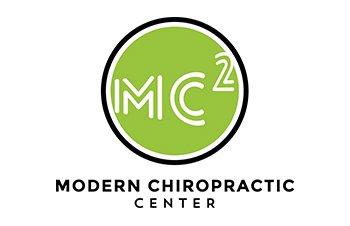Cervical Posture
In today’s digital age, we find ourselves spending more time sitting, whether at work, during leisure activities, or while commuting. However, prolonged sitting can lead to various musculoskeletal issues, with forward head posture being one of the most common concerns. Forward head posture occurs when the head is positioned in front of the shoulders, putting strain on the cervical spine and its nerve roots. To shed light on the effects of different sitting positions on cervical nerve root function, a groundbreaking cross-sectional study titled “Alterations in Cervical Nerve Root Function during Different Sitting Positions in Adults with and without Forward Head Posture” was conducted by Kamel et al. The study, published in the Journal of Clinical Medicine in 2023, explores the impact of sitting postures on cervical nerve roots in both healthy individuals and those with forward head posture [1]. Let’s dive into the key findings and implications of this research.

Understanding the Cervical Nerve Root Function
The cervical spine, situated in the neck region, consists of seven vertebrae and is crucial for providing support to the head and facilitating movement. Emerging from the spinal cord in the cervical spine are eight pairs of cervical nerve roots. These nerve roots play a pivotal role in transmitting signals to and from the brain, controlling motor and sensory functions in the neck, shoulders, and upper extremities.
Forward Head Posture: A Growing Concern
With the widespread use of smartphones, tablets, and computers, forward head posture has become increasingly prevalent in modern society. This posture is characterized by a protruded head position, placing extra stress on the cervical spine and associated structures. Over time, forward head posture can lead to muscle imbalances, spinal misalignments, and nerve compression, contributing to neck pain, headaches, and other related symptoms.
The Study: Methodology and Participants
The cross-sectional study by Kamel et al. aimed to investigate the effects of different sitting positions on cervical nerve root function in individuals with and without forward head posture. A total of 100 adult participants were included in the study, comprising 50 individuals with forward head posture and 50 age-matched healthy controls. The researchers employed electrophysiological testing to measure nerve conduction velocity and assess the function of cervical nerve roots. Furthermore, participants were assessed in three different sitting positions: slouched posture, neutral posture, and upright posture.
Key Findings
Impact on Cervical Nerve Conduction
The study found that individuals with forward head posture exhibited significantly reduced nerve conduction velocity compared to the healthy control group. This suggests that forward head posture may lead to impaired nerve function in the cervical spine, potentially contributing to musculoskeletal symptoms.
Sitting Posture Matters
The research highlighted that sitting posture has a considerable influence on cervical nerve root function. The slouched posture was associated with the slowest nerve conduction velocity, while the upright posture showed the fastest nerve conduction. Maintaining a neutral or upright sitting posture may, therefore, be beneficial for preserving cervical nerve root function.
Nerve Function Variability
Interestingly, the study observed that the effect of different sitting positions on nerve function varied among individuals. Some participants exhibited more significant alterations in nerve conduction with specific postures, while others experienced relatively minimal changes.
Clinical Implications
The findings of this study carry important clinical implications, emphasizing the importance of promoting optimal sitting posture for individuals with and without forward head posture.
- Posture Awareness: Healthcare professionals should raise awareness about the impact of sitting posture on cervical nerve root function. Encouraging individuals to adopt a neutral or upright sitting posture can help alleviate strain on the cervical spine and reduce the risk of musculoskeletal issues.
- Forward Head Posture Management: For individuals with forward head posture, targeted interventions, such as ergonomic modifications, postural exercises, and physical therapy, may be beneficial in improving posture and preserving cervical nerve function.
- Individualized Approach: Since the effect of sitting postures on nerve function varies between individuals, healthcare practitioners should adopt an individualized approach when addressing posture-related concerns. Tailoring interventions based on each person’s unique needs can lead to more effective outcomes.
The study conducted by Kamel et al. provides valuable insights into the impact of different sitting positions on cervical nerve root function, especially in individuals with forward head posture. As sitting becomes an increasingly integral part of modern life, understanding the significance of posture on spinal health is crucial. By promoting proper sitting posture and implementing targeted interventions, we can take proactive steps to mitigate the negative effects of prolonged sitting and improve overall musculoskeletal well-being.
References
- Kamel M, Moustafa IM, Kim M, Oakley PA, Harrison DE. Alterations in Cervical Nerve Root Function during Different Sitting Positions in Adults with and without Forward Head Posture: A Cross-Sectional Study. Journal of Clinical Medicine. 2023; 12(5):1780. https://doi.org/10.3390/jcm12051780





